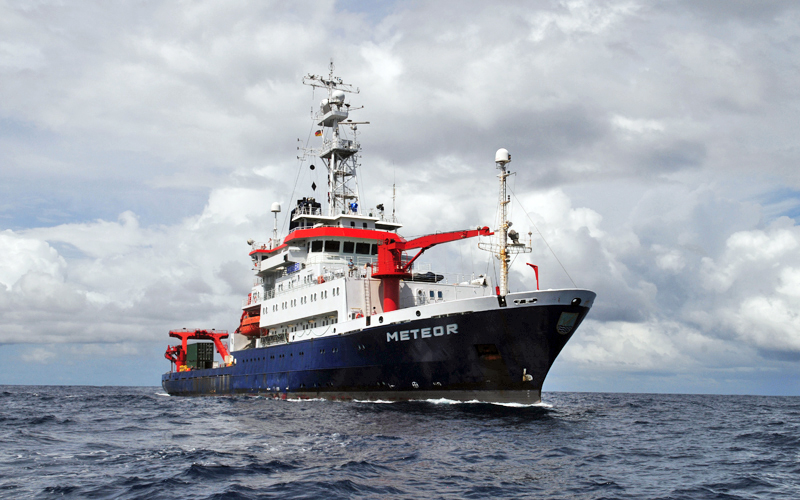METEOR M92
- Area:
- Eastern South Pacific
- Time:
-
05.01.2013 - 03.02.2013
- Institution:
- GEOMAR
- Chief scientist:
- Stefan Sommer
Major aim of the cruise is the determination of benthic processes and feedback mechanisms of benthic nutrient release on the maintenance and spreading of oxygen mini- mum zones (OMZ). The major objectives of the expedition are: i. determining the variability of benthic nutrient release in relation to the hydrodynamic regime and regional differences in the bottom water levels of O2, NO3-, NO2-, as well as the organic carbon content of surface sediments, ii. investigat- ing mixing processes in the benthic and bottom boundary layer (BBL) and quantifying diapycnal and advective solute fluxes such as N2, NH4+, P, Fe, Si and radium isotopes across the BBL into the stratified water column and into the mixed surface layer, iii. identifying processes involved in the cycling of N-, Fe- and P.
The objectives will be archived by simultaneously measuring benthic solute fluxes using a suit of lander deployments, variability and strength of the current regime using different benthic landers and current meter moorings, shipboard and autonomous mi- crostructure shear and temperature, and conventional CTD deployments that include water sampling for solute concentration analysis. The envisaged working areas are located at 8°S, 10°S, 12°S and 13°S ranging from water depths of about 80 to 1500 m.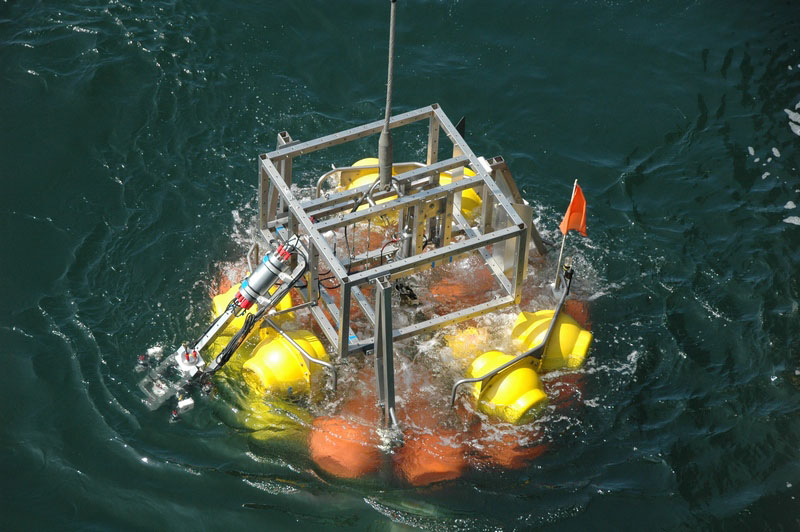
A Lander is launched during cruise M92. Photo: M. Schneider, FS METEOR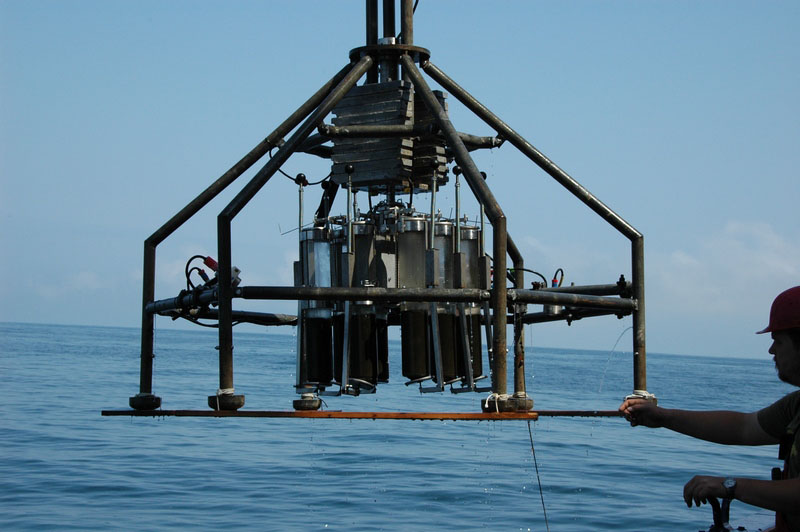
A multicorer collected samples from the upper layers of the seafloor. Photo: M. Schneider, FS METEOR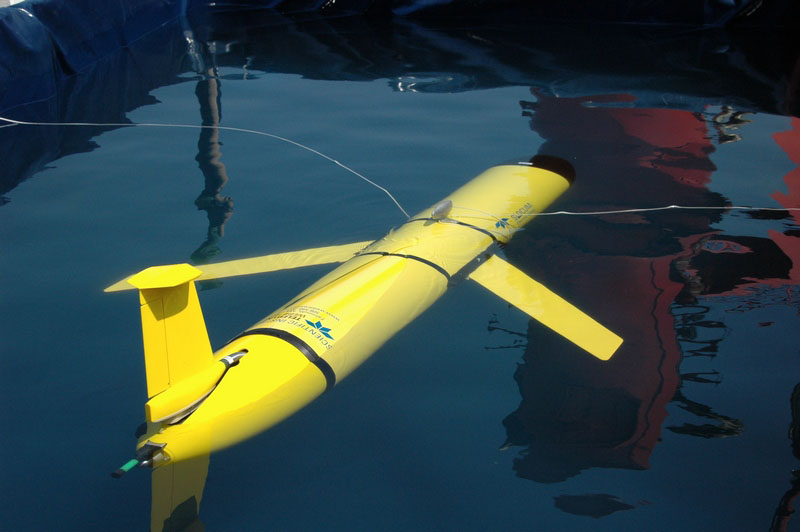
An oceanographic glider in the pool on board RV METEOR. Here the scientists prepare the device for its mission in the oxygen minimum zone off the coast of Peru. Photo: M. Schneider, FS METEOR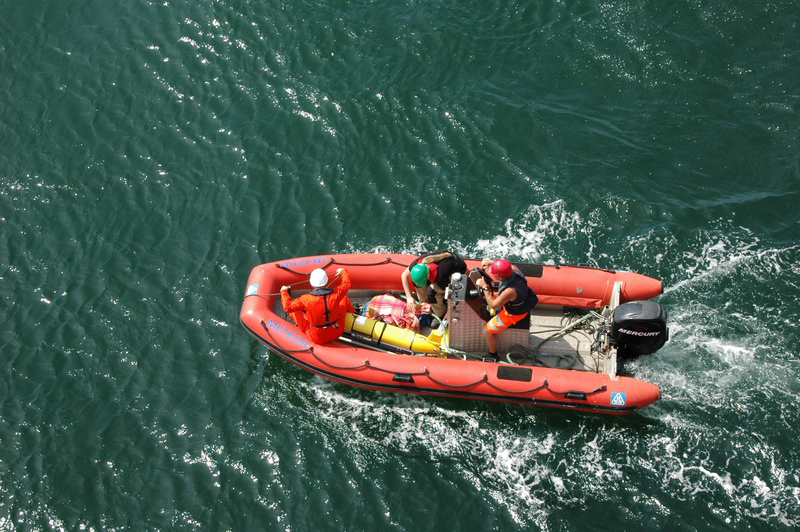
With the METEOR's dinghy the glider is launched. Photo: M. Schneider, FS METEOR


